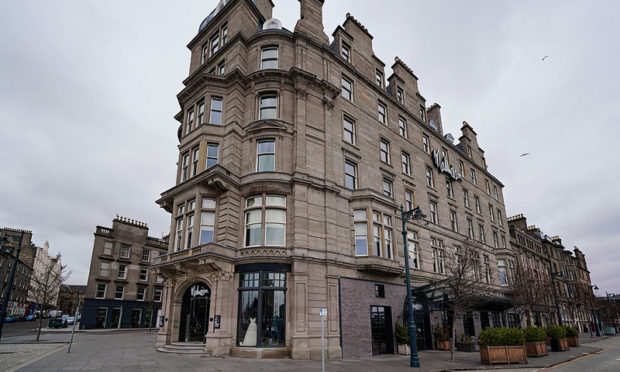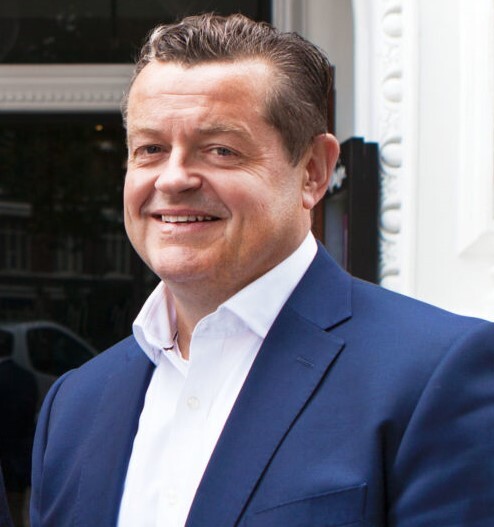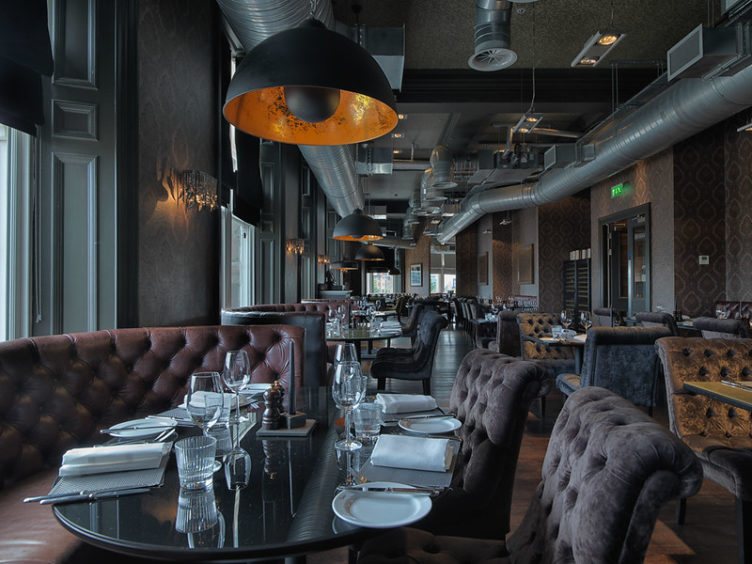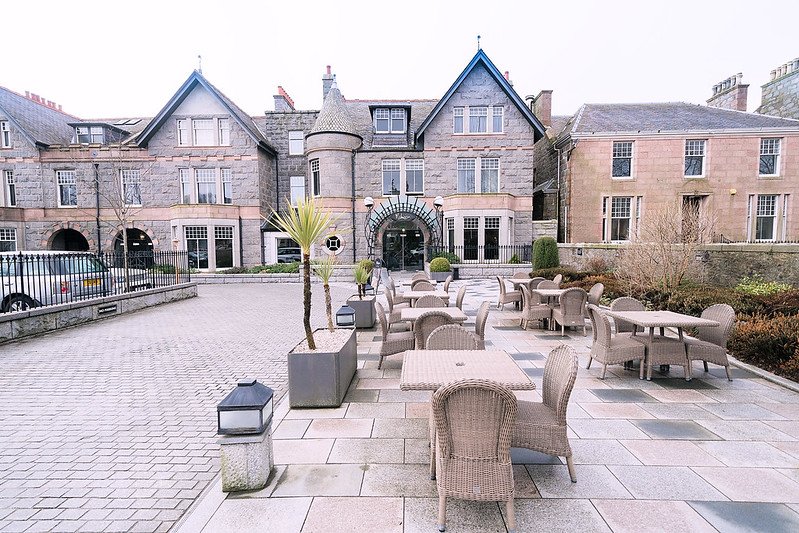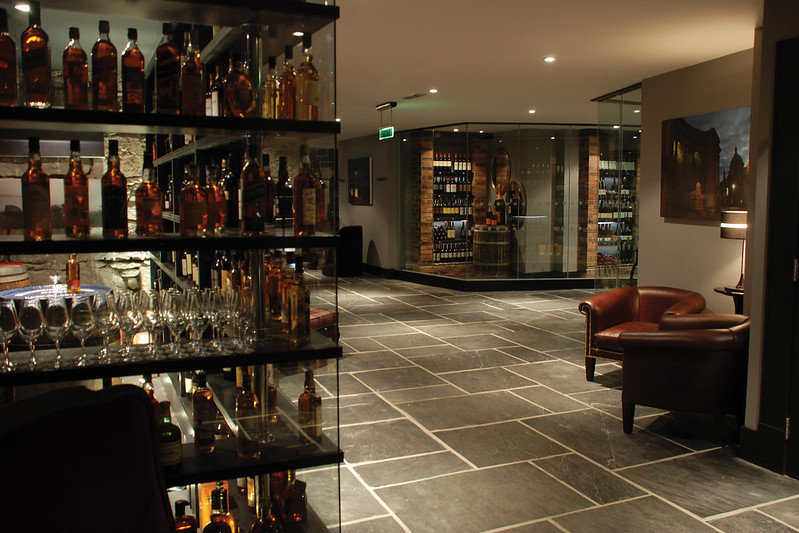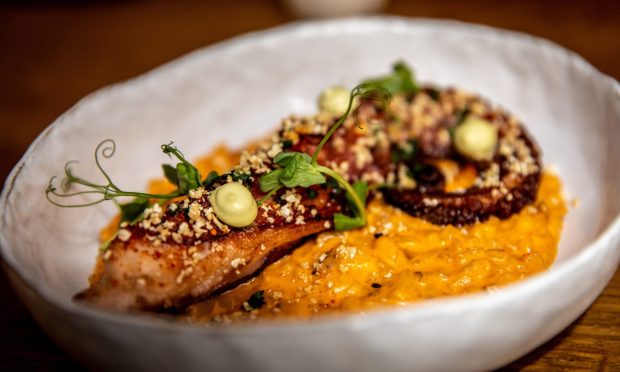With hotels in Scotland expected to welcome guests again from July 15, Scott Harper, chief operating officer of the Malmaison and Hotel du Vin group, talks to Clare Johnston about the changes we can expect to see.
On March 23, the unthinkable happened to the hotel and food services industry when it was shut down overnight.
But for Scott Harper, the man tasked with running operations for the 35 Malmaison and Hotel du Vin hotels in the UK – including in Dundee, Aberdeen, Edinburgh and Glasgow – the order to close as the nation entered the full grip of the coronavirus epidemic, was a relief.
The writing had been on the wall for several weeks, and by the time the government announced the closure of the hospitality industry, businesses were crying out for a decision.
Scott Harper said: “In the last few weeks you could see [lockdown] coming so we had started to make plans to close the hotels. I’ll be quite honest, I think it was a relief that the Government decided to close down the hotels because you could see the virus was spreading and we believed it was the right thing to do. As much as it hurts and is economically damaging to us all, it had to happen.
“We felt it was important to have a lockdown team in place. We had to continue to secure the hotels, we had to maintain them – leaks still happen whether you’re open or shut – and it’s been prudent to keep some of the plant machinery running and have people there to sort out maintenance issues.
“We obviously used the furlough scheme to support the business – and that’s from our central reservations to our sales teams to our hotel teams. There were thousands of cancellations and refunds [to work through] and that has continued until now we have a potential opening date from the Scottish Government.”
Scotland’s tourism businesses have been told to prepare to open on the 15th of July – a move that is conditional on the country being able to move to the third phase of the easing of lockdown restrictions if the infection rate continues to fall.
For weeks now, leaders from the hospitality industry have been in discussion about the sort of measures that could be put in place to allow them to reopen safely. And, says Scott Harper, the result is that most will now adopt similar protocols.
He said: “There are lots of forums that we attend weekly so there’s lots of industry discussion going on in the background. I would say now reading the plans that we’re all coming up with a pretty similar way forward. We all agree that health and safety is the number one consideration when we open up for staff and guests.
“Obviously the first thing is when you arrive at the hotel we will have hand sanitiser stations in place and we will request that everyone sanitises their hands when they’re coming in and out of the hotel.
“We’ll try to make check-in as contactless as possible, we’ll have screens at reception and we’ll look for cashless payment, we’ll sanitise guest keys, we’ll have a queuing system in place with the two-metre system for distancing, and we’ll have printed markings for the floor.
“Key touchpoints will be cleaned regularly, the areas you can’t avoid contact like pressing a lift button. We’ll have to manage the lifts so that only one person or a group from the same household can go in at any one time. We’ll also point [guests] towards the stairs; that’s the reality when it’s busy you may have to say, ‘I’ll take the stairs’. There will be directional flows and arrows to keep people apart, we’ll remove furniture in public areas, we’ll blank out tables in the bar and restaurants so we can maintain distancing in those areas.”
And for both hotel guests and diners, service in the restaurant will feel a little different – starting with the traditional breakfast buffet.
“With regards to say a breakfast service, in the past you might expect a buffet. We’ve had to pull that. In the later stages of March we’d already started individually wrapping everything at breakfast and we’ve removed our Sunday buffet as well. They won’t be coming back in the near future. Either we’ll have a style of service where you select your items and staff behind a screen will serve them and you take them back to your table or put it in a bag to go, or we may move to just table service. For us it will be based on guest feedback and what the government advice is.
“We’re going to be flexible. We’ve got QR codes set up for the menu so you can look at it on your phone or, if someone doesn’t have that technology, we’ll have one-time use menus to throw away. Salt and peppers will be sachets – so it’s lots of details, when you start getting down to it there are a myriad of details. You have to balance things out. If you’re at the supermarket there are still some touchpoints. Where there are then the onus is on the individual as well to make sure they sanitise their hands. There’ll be stations before you enter the bar or restaurant where we ask people to do that. If we can do that, we’ll do as a hotel as much as we can to ensure all areas are clean.
“We’ve reduced our menu down and opening hours – we’re open for breakfast and dinner – and we’ll see how it develops.”
But, at least to begin with, staff will not be required to wear masks.
“The government advice at the moment is that they’re not required. I would be happy for staff who would like to wear a mask, to wear one. The key thing here is personal choice. It is not mandated by the government, I don’t think it will be mandated, but for the staff concerned I want them to feel comfortable. If we get feedback from the guests that they think staff should wear masks then we’ll have that discussion within our teams.
“What we start with might not be what we’re doing two to three weeks after opening because we’ll learn, we’ll listen and we’ll move on.”
Like so many hospitality firms, the future rests heavily on the level of social distancing required. For now it is two metres, but both the UK and Scottish governments have pledged to keep this under review and the industry is lobbying hard to get the required distance reduced to one metre.
Scott added: “We have a lot of weddings and private functions and if it’s two metres we can run with 30% of our space, for the long-term that’s not sustainable but if it’s the first step it’s reasonable until everyone feels comfortable with one metre. It will probably move quickly to where people are comfortable with a smaller distance.
“Of course one metre is better for the sustainability of the business and for smaller establishments I understand that it’s vital. It’s one of those discussions that will be ongoing, but two metres for six to nine months is not sustainable. If we can open on the dates that have been set, that’s a really positive start for us, and I think it will go with public mood and the science.”
With the announcement of reopening dates – which will happen 11 days earlier in England – Scott hopes the public will now feel confident enough to start booking – although with a current two-week quarantine rule in place for those arriving from overseas, for now the customer base will be largely domestic.
“I’m hoping now that we have more clarity that we can start to see cranking things up from a sales perspective and start movement there. I don’t think it will be an avalanche I think people will be cautious, an element will want to get out, there will be a cautious element and those undecided.
“It’s going to be a tough time in the coming months with the levels of business. Corporate business we probably won’t see much until September. We’ve had feedback from some of the bigger corporates that their staff might not come back until December or even January, so that’s quite concerning.
“There’s all the talk about corporate life changing forever [with video conferencing], but I do think face to face meetings and travel will continue but it will be slower to recover.
“Let’s open with minimum staffing. We have the support of the furlough scheme, we can test the water, put the least amount of people in. The good thing is we can call people in very quickly who are on furlough and get them back into the operation. We’ll probably start with 10 to 20% extra people in first month and see how that builds.”
Like many of his colleagues in the hotel industry, Scott wants to see the two-week quarantine rule dropped in favour of a testing-based system.
“Where it will affect us are key gateway cities, tourism cities like Edinburgh it will have a massive effect there. Most of the feedback is it doesn’t make sense to continue with that and it’s a negative for the hospitality industry because we need to see the volumes coming back in.
“I understand the principles behind it. I suppose I puzzle a little now we have testing to a better place and it’s quicker, even if you had to pay for a test when you enter the country, that would be a better way to do it. Maybe I’m just being naive but wouldn’t that be a better way – test and then quarantine? You could then utilise hotels at the airport for quarantining. There are better ways of managing it than just having a blanket quarantine. I think it’s probably one of the weaker guidelines that have come in.”
